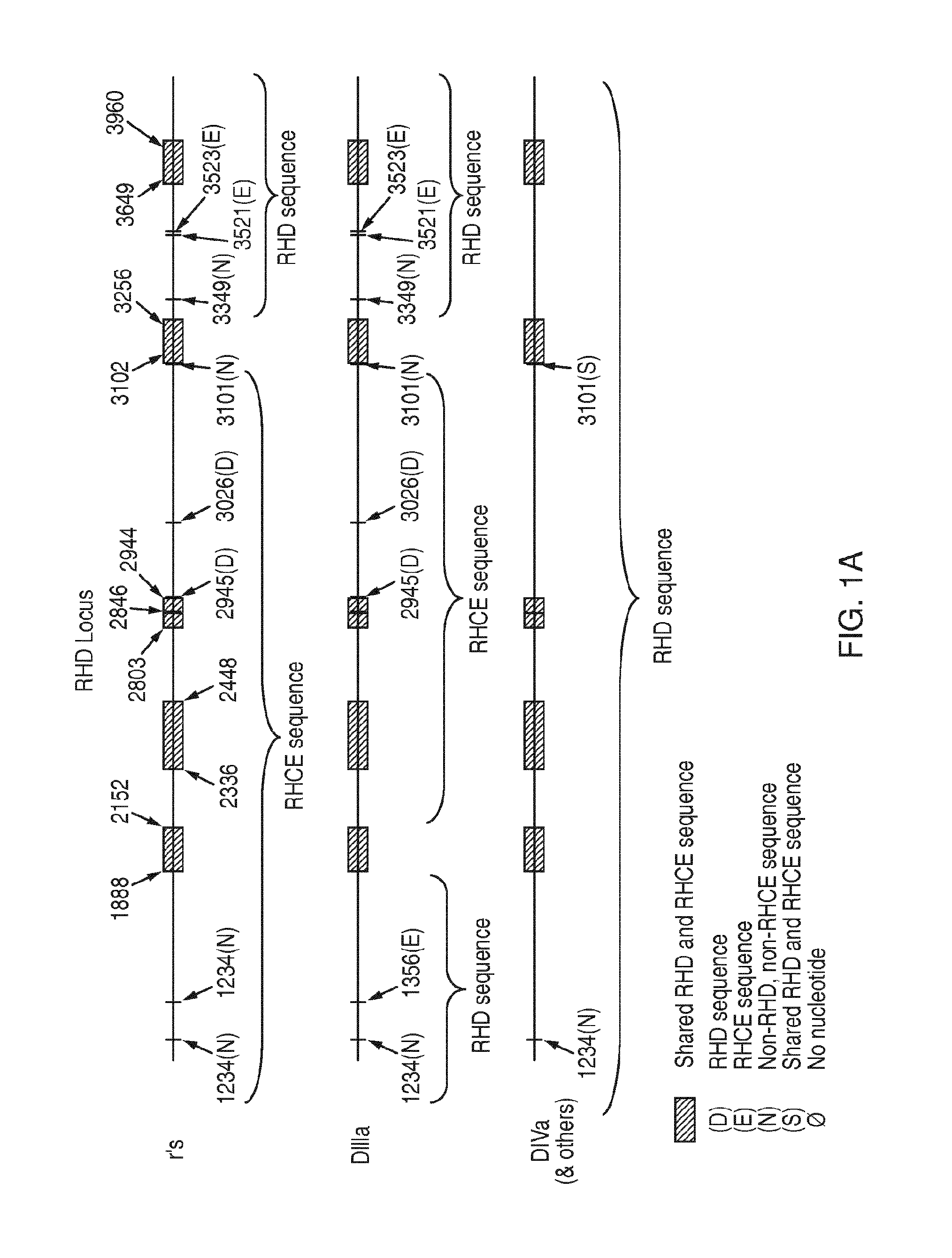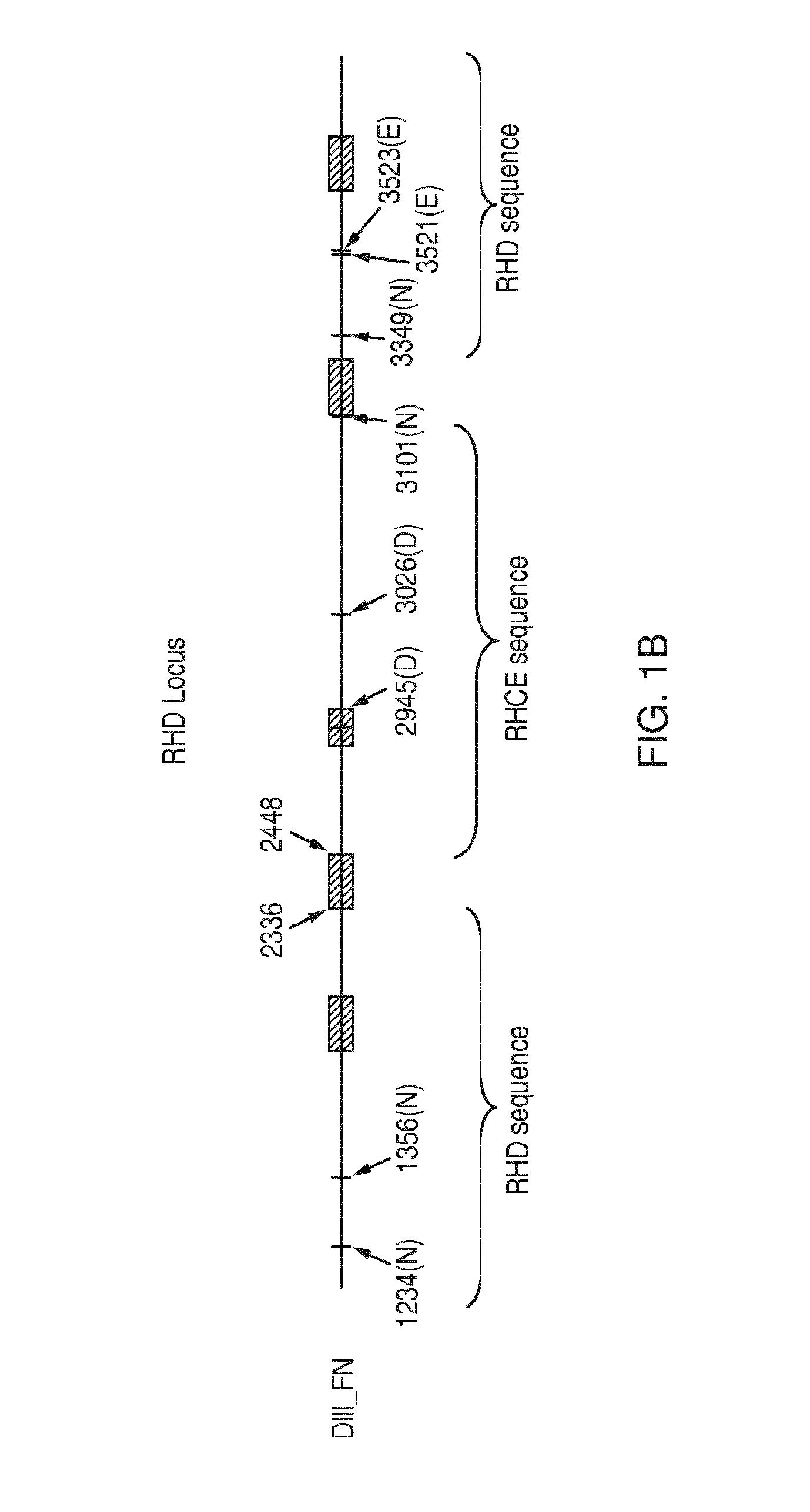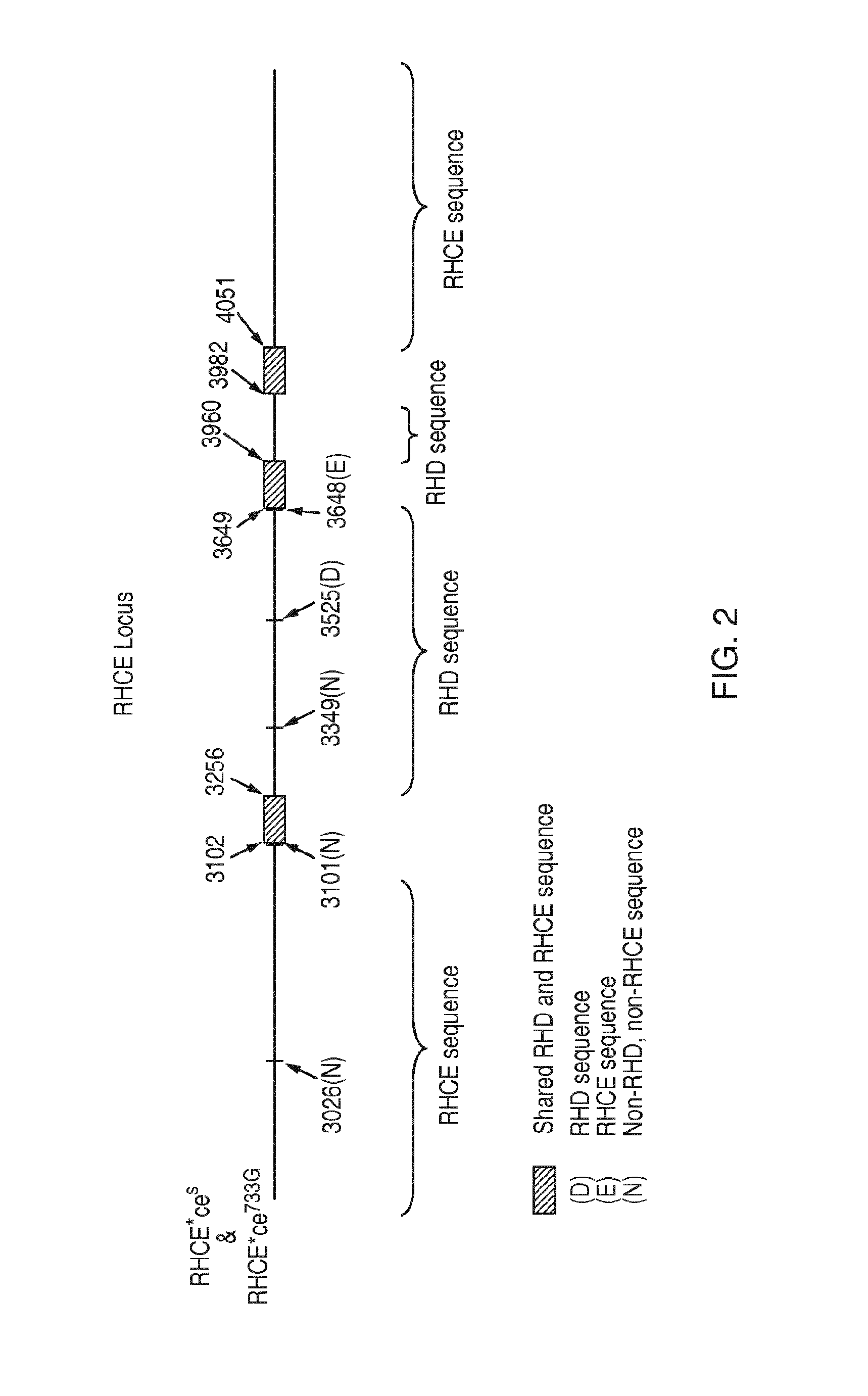Discrimination of blood type variants
a blood type and variant technology, applied in biochemistry, organic chemistry, sugar derivatives, etc., can solve the problems of blood transfusion failure in scd patients, and achieve the effect of high degree of accuracy and clinical utility
- Summary
- Abstract
- Description
- Claims
- Application Information
AI Technical Summary
Benefits of technology
Problems solved by technology
Method used
Image
Examples
example 1
[0125]Discrimination among genetic variants that share a RHD / RHCE hybrid exon 3 but encode different forms of D Ag (Partial D Ag vs. No D Ag) and RhC Ag (Normal C Ag vs. Altered / Weakened C Ag, sometimes abbreviated as C+W)
[0126]The following example relates to a method of discriminating among RHD / RHCE hybrid exon 3 variants RHD*r′s, RHD*DIIIa and RHD*DIVa-2. The method is based on the interrogation of the nucleotide composition of the genomic DNA of a sample at three locations in the RHD locus.
[0127]Identification of the nucleotide at a first location enables discrimination between variants RHD*r′s / RHD*DIIIa and variant RHD*DIVa-2, and involves an ASP. In particular, this ASP interrogates polymorphic positions IVS7+3349, IVS7+4105, IVS7+4106, IVS7+4107, IVS7+4108, IVS7+4127 in RHD intron 7.
[0128]Identification of the nucleotide composition at a second location enables discrimination between variants RHD*r′s and RHD*DIIIa, and involves an ASP. In particular, this ASP interrogates pol...
example 2
[0166]Discrimination among genetic variants that share a RHD / RHCE hybrid exon 3 but encode different forms of RhD Ag (Partial D Ag vs. No D Ag) and C Ag (Normal C Ag vs. Altered / Weakened C Ag, sometimes abbreviated as C+W)
[0167]The following example relates to a method of discriminating among RHD / RHCE hybrid exon 3 variants RHD*r′s, RHD*DIIIa and RHD*DIVa-2. The method is based on the interrogation of the nucleotide composition of the genomic DNA of a sample at three discrete and separate locations in the RHD locus by means of a molecular technique known in the art as Allele-Specific Polymerase Chain Reaction (ASP). Amplification of a DNA segment at one location enables determination of the presence of RHD / RHCE hybrid exon 3 in the test sample. Amplification of a DNA segment at another location enables determination of the presence of variants RHD*r′s or RHD*DIIIa and absence of variant RHD*DIVa-2. Amplification of a DNA segment at yet another location enables determination of the p...
PUM
| Property | Measurement | Unit |
|---|---|---|
| polymorphic | aaaaa | aaaaa |
| polymorphic positions | aaaaa | aaaaa |
| degree of compatibility | aaaaa | aaaaa |
Abstract
Description
Claims
Application Information
 Login to View More
Login to View More - R&D
- Intellectual Property
- Life Sciences
- Materials
- Tech Scout
- Unparalleled Data Quality
- Higher Quality Content
- 60% Fewer Hallucinations
Browse by: Latest US Patents, China's latest patents, Technical Efficacy Thesaurus, Application Domain, Technology Topic, Popular Technical Reports.
© 2025 PatSnap. All rights reserved.Legal|Privacy policy|Modern Slavery Act Transparency Statement|Sitemap|About US| Contact US: help@patsnap.com



